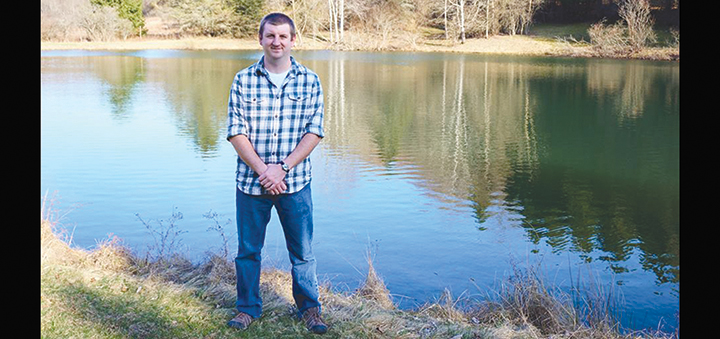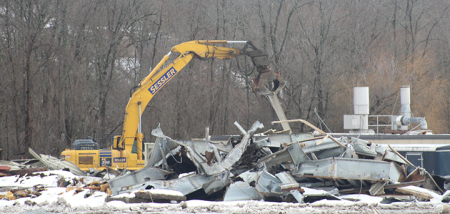Mussels And Virus
Published:
March 25th, 2020
By:
Eric Davis
 Evening Sun File Photo
Evening Sun File Photo
About two weeks ago I spotted an article that was shared on Facebook that caught my eye. The headline read something like, “NYSDEC Fish Hatchery Finds Zebra Mussels, Stocking to be Altered.” There were two reasons why I was interested in the article. The first reason was because I researched ways to disinfect watercraft exposed to zebra mussels for my master’s thesis. I was curious what measures the hatchery had taken and how they failed to compare to other treatment methods I had learned about. The second reason I was interested was to see what hatchery it happened at to see if any waters nearby would be affected. So, I clicked on the link to the article and read it.
The Rome Fish Hatchery, located just outside of Rome, was the hatchery in the article. The Rome Hatchery is one of the biggest NYSDEC hatcheries in the state and it raises most of the trout that are stocked via helicopter and plane in the Adirondacks. The hatchery uses two sources of water for their operations. They use spring water to fill some ponds, and they use water that comes from Delta Lake for other ponds. In January, zebra mussels were found in Delta Lake, so the DEC started testing the hatchery waters that came from the lake and found veligers, the larval stage of the zebra mussel. They are microscopic so a load of fish and water could be loaded into a transport truck that is contaminated without knowing it. Then when they are stocked into the body of water the veligers could settle and become adult mussels. Due to this problem, the fish that are currently in the infected ponds will only be stocked into waters that already have zebra mussels present. However, this means that there will not be enough trout to stock the mussel-free waters at the rate that they were planned to be, and some small stockings will be skipped this year. The stocking list on the NYSDEC website will be adjusted to show these changes.
The mussel situation got me to thinking about how it parallels the current COVID-19 situation just on a different scale. Zebra mussels are extremely adaptive to freshwater ecosystems and can survive almost anywhere if there is calcium in the water and algae to feed on. Due to their microscopic larvae, they can be spread quickly without anyone knowing (just like a virus). The leading thought on how the mussels spread so rapidly is that the residual water left in a boat when it is put on a trailer after use holds veligers, that are then introduced to the next body of water when the boat is launched. Once zebra mussels are found, it’s usually too late to contain them because they can reproduce in their first year so by the time the mussel are big enough for people to see them, they are sexually mature. In the world of aquatic invasive species (plants and animals), the focus in on preventing the introduction of the invasive species. If you can prevent the species from going anywhere, it can’t cause further harm. I see it being very similar to the social distancing stance being taken for the COVID-19 virus. The only difference is that the people with COVID-19, hopefully can recover and get over the virus, instead of infected lakes that will have zebra mussels basically forever.
The most current methodology for this is to wash watercraft with hot water, high pressure sprayers or to allow the watercraft to fully dry between use. If you look at the maps on the USGS website about zebra mussels, you can see how rapidly they spread after they were discovered in the Great Lakes in the late 1980s to bodies to water that are not directly connected to the Great Lakes. To think that the Finger Lakes all had mussels present in the 90s but it took until 2008 for Otsego Lake to become infested and until 2020 (most likely 2019 for the mussels to be found in January) for Delta Lake to get them is a sign that prevention measures were successful in slowing the spread.
We now know the detrimental impacts that zebra mussels have on ecosystems after 20+ years of watching them. By filtering out the green algae that are usually consumed by zooplankton that start the food chain for fish, the zebra mussel cuts out the food chain that makes its way to large fish (and humans) while also making the water crystal clear. Once the water is clear, the plant community in the lake changes to sun-loving plants and they grow deeper as the sun penetrates deeper in the water. This changes what fish species can thrive because the shallow weedy refuge for larval fish to avoid predation is now missing so less fish can grow to a size that makes them good table fare for fisherman. With less food around, larger fish die off and are not replaced as there is not enough resources to support them. Not to mention the impact the mussels have to humans directly. From swimmers cutting their feet on the mussels on the bottom of the lake or pond, to clogging intake pipes used for municipal water supplies.
It will likely take years to understand the full impact of the COVID-19 outbreak, but if we can take a hint from the zebra mussel spread and actively try to stop its spread, the COVID-19 situation should be better managed and stop sooner.
Author: Eric Davis - More From This Author
Comments











